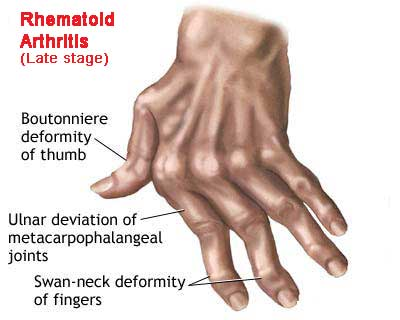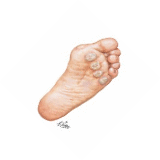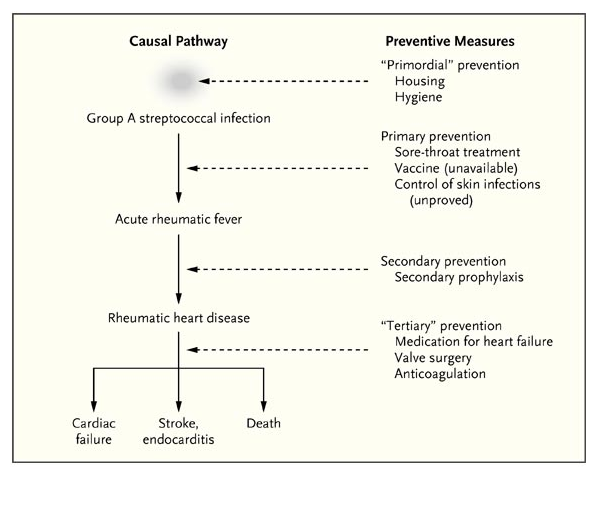Introduction
A lot of people tend to think that rheumatism is a disease. However, this is not the case. Rheumatism refers to a wide range of conditions affecting the joints and the connective tissues. Infection of rheumatism is usually a sign of ill health.There are over a hundred rheumatic conditions and new cases are emerging every day. This has made it hard for researches and medical practitioners to find a definite cure. Impurities accumulate at a given part of the body causing muscle and joint pain, inflammation and swelling of the tendons. In the medical corridors, this is what is referred to as rheumatism (Raczynski 64-70).
The figure below shows a person’s hand suffering from rheumatoid arthritis a form of rheumatism.

Rheumatism is associated with wide range of conditions; some are regarded as mild while others are known to be extremely severe. The most common conditions associated with rheumatism include tendonitis, rheumatoid arthritis, lupus fibromyalgia, osteoarthritis, rheumatic heart disease, rheumatic fever, rheumatoid arthritis, myositis, temporal arteritis, capsultis, neck pain and tenditinis (Symmons 248).
Arthritis is one of the most common rheumatic conditions in many parts of the world. It mostly occurs at the age of thirty years and above. It is termed as more chronic than other terminal illnesses like cancer and diabetes as it hinders mobility, which results to inactivity within a very short time span of one to five years of diagnosis (Vanelli et al 901).
Classification of Rheumatism
Non-articular Rheumatism
Non- articular rheumatism affects the tissues. This results to pain throughout the body. Fibromyalgia and tendonitis conditions are examples of Non-articular rheumatism.Non- articular rheumatism may also cause pain on only a specific joint. A good example is the bursitis condition, where the bursa, which are mainly special sacs overlapping muscles and protecting joints, are inflamed. This occurs mostly at an injured joint or a joint exposed to strenuous activity. Other forms of non-articular rheumatism are repetitive. They result from repetitive tasks. Carpul tunnel syndrome is an example. It is caused by poor positional problems like carrying buckets of water frequently. (Symmons, 277-289)
Psychogenic rheumatism
Psychogenic rheumatism is a type of rheumatism pertaining to patients who report inconsistent muscle and joint pains that have no anatomic and physiological explanation. This is usually caused by psychological issues that one may be going through.
Causes of Rheumatism
Behavior change
Participating events like stress, infections, physical and emotional trauma as well as genetic factors can cause abnormalities in sleep, spinal structures, and neuroendocrine axes. Structural and muscle abnormalities lead to dorsal horn spiral neurons hyperexcitability. This happens as a result of increased transmission of nociceptive signals from the periphery to the dorsal horn and through the release of neuropeptide transmitters like calcitolin peptide and p-dynorphine and activation of neurons (NMDA) N-Methyl-d –aspatate site receptor by amino acids. Hyperexcitabilty may also result from sleep abnormalities. Lack of sufficient sleep disrupts the secretion of the Growth Hormone (GH) and stimulation of production of (NGF) the Nerve Growth Factor as indicated in Seddighzadeh et al 821.As a result, the dorsal horn spiral neurons increase their excitability and produce nociceptive input in the brain. This greatly alters the functional activities measured by rCBF, or the regional Cerebral Blood Flow, of the brain, which regulates affective-motivational dimension of pain and sensory-discriminative. In processing the affective-motivational pain dimension, activity increases. In structures that modulate a nociceptive input activity decreases. This results to abnormal, persistent widespread pain as shown in figure 1 below.
Between variables, there are solid lines, which is an indication of the relationship with reliable empirical evidence. Relationships are indicated by doted lines for which preliminary evidence is available.

General cause
Rheumatism causes vary. But the main cause is alteration of reactions in human bodies. The body expels its waste easily through conversion of waste into gaseous form. The amount of oxygen inhaled daily is only capable of breaking down a given amount of the food taken in. This means that if one takes more food than his or her body can digest, incomplete indigestion occurs. When oxygen is inhaled, the first type of food broken down is carbohydrates. When carbohydrates diminish all oxygen inhaled, protein is either partially broken into amino acids or undigested. The amino acids are converted to bile in the liver. They assist in digestion and bowel movement. The amino acids might also be converted into urea, a soluble form.
Incase the liver partially fails to covert all amino acids, the amino acids combine with starch and sugar compounds to form more complex acids, a stage in rheumatism known as Acidosis. This results to constipation and waste is retained in the body. The waste is sometimes accumulated in glands and causes muscle strain and pain. This results to asthma, gout, arthritis, neuritis, chronic rheumatism and other related rheumatic conditions. This is also triggered by over-consumption of foods forming acids, eating food with artificial additives or processed foods, daily consumption of red meat and hormonal imbalance.

The figure below shows foot involvement in rheumatism. There accumulation of waste on foot.
Symptoms
The rheumatic symptoms include soreness, pain and fever, and super sensitivity of the affected parts; even at the slightest touch, it causes inconsiderable pain. Other symptoms include stiffness of the muscle affected, repetitive joint pain after awakening, especially in children this (should alarm the parents), weaker muscles than the others, whereby one leg might seem weak than the other.
Diagnosis
Rheumatism diagnosis procedure depends on the condition of rheumatism. However, there are general tests carried out which include:
Special study on a person’s history
A study on a patient’s history is extensively carried out to determine any hereditary factors or if the symptoms might be as a result of another disease.
Physical examination
Some of the physical examinations may involve testing the lower back flexion, which is known as the Schober’s test. The physicians may also carry out an inspection on multiple joints. Optionally, there can be an inspection known as musculoskeletal examination. In musculoskeletal examination, an RMSE, or a regional musculoskeletal exam, is carried out. It involves assessing the inflammation and testing of the functional structure. A GMSE, or a general musculoskeletal exam might also be carried out. This involves assessing the joint’s inflammation. Finally, an SMSE or the screening of the musculoskeletal exam can be performed. The structure and function is assessed rapidly. Incase any complex tests are required; a patient is referred to a rheumatologist or any other physician who is specialized. (Fuller, 133-77)
Treatment
This depends on the type of rheumatism one is suffering from. However, most rheumatic conditions are treated with antibiotics. For instance, minocyline is an antibiotic used to treat rheumatic arthritis. For those using antibiotics, they need to take them for a long period of time. In special cases, rheumatic conditions require special treatment. For instance, a person suffering from arthritis, a form of rheumatism that has no cure and affects mobility, thorough physiotherapy to repair or replace non-functional joints is needed. This is done with the aid of drugs like hydroxychloroquine, methotraxate, and penicillamine and gold compounds. These drugs are too toxic and should be avoided at all costs. However, there is no option as they relief symptoms and their discontinuation results to the re-occurrence of arthritis. (Vishal , 1112-1346)
Prevention
Some arthritis conditions can be minimized or completely eradicated. A research has shown that people living in western countries have low chances of getting infected with arthritis and rheumatic heart disease. This has been as a result of using penicillin for primary prevention. Researchers also found out that their high living conditions resulted to improved hygiene and less overcrowding. This has led to reduction in transmission of group A streptococci. The diagram below further illustrates the preventive measures for rheumatic heart disease and rheumatic fever. This indicates that living under healthy conditions and taking a balance diet can go a long way in preventing rheumatism conditions.
Primary prophylaxis is referred as “Sore-throat treatment” which is diagnosis and treatment of A streptococcal pharyngitis. (Jonathan R. Carapetis 439-441)

An integral to bone, ligament and joint is daily supplements of essential nutrients, regular exercise and a healthy diet. Rheumatism can only be prevented or completely eradicated by a good balance diet, inhaling clean amount of oxygen and exercising. This will help to fight away impurities in the body system. For the body systems to function properly, it needs ample oxygen and a balanced diet. Oxygen helps in the complete breakdown of the food and exercising ensures that the food taken is completely broken down and waste (which is regarded as poison) is expelled through sweating, urinating and the bowel. If a person becomes inactive and takes more or the same amount of food he/she used to take, he/she is likely to retain more waste in the body. This causes the accumulation of such waste in one part of the body, hence causing rheumatism. Rheumatism is common with aged people due to their inactivity and lack of exercise.
Works Cited
Jonathan R. Carapetis. “Rheumatic Heart Disease in Developing Countries”. The New England Journal of Medicine.357(5) 2007 pp 439-441.
Raczynski, James M. “Rheumatism”. Journal Book of Health Promotion and Disease Prevention 2 (5) 1964 pp 64-70.
Jacob Fuller, “Rheumatoid: Physical Examination” Boston medical and surgical journal 125 (1891) pp 133-177).
Seddighzadeh, Maria et al. Evidence for interaction between 5-hydroxytryptamine (serotonin) receptor 2A and MHC type II molecules in the development of rheumatoid arthritis. European Journal of Human Genetics: EJHG. Basel, Jul 2010 Vol 18 (7) p 821.
Vishal Madan. “Rheumatism: Antibiotic Treatment” Clinical Journal on Medicine. 76 (2002) pp1112-1346.
Symmons, Deborah. Rheumatoid arthritis: assessing disease activity and outcome. London: Clinical Medicine Vol 10 (3) p 248-349.
Vanelli, Roberto, Pietro Costa, Stefano Marco Paolo Rossi and Francesco Benazzo. Efficacy of intra-articular polynucleotides in the treatment of knee osteoarthritis: a randomized, double-blind clinical trial. Knee Surgery, Sports Traumatology, Arthroscopy; Heidelberg Jul 2010. Vol 18 (7) p 901.
